17 Basement Office Ideas & Design Tips (with Pictures)
-

- Last updated:
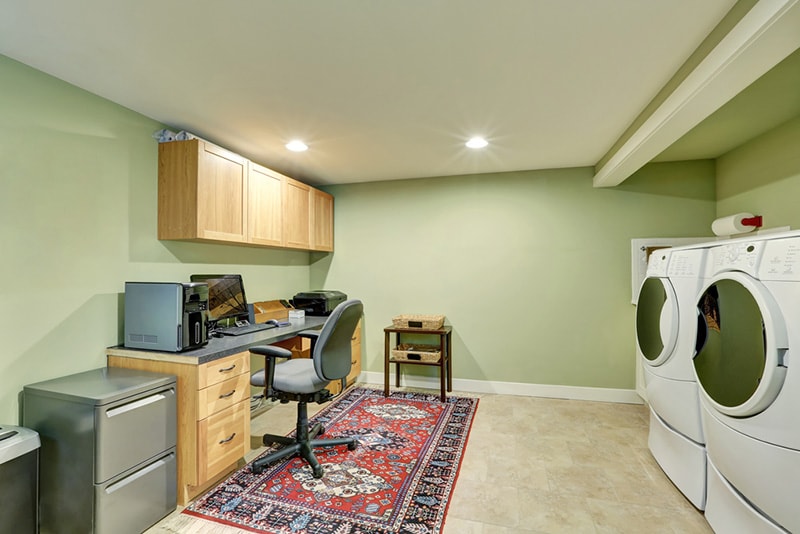

The last few years have seen a considerable increase in the number of people who work from home. Estimates vary but between 1 in 4 and 1 in 2 people now work from home at least some of the week. Whether you spend a few hours in the evenings preparing for the day ahead, or you work the entire week from home, you do benefit from having a dedicated space to work from.
The basement, which is often used as a utility room or storage area, can offer the ideal location for a home office. It’s out of the way of the goings on in the rest of the house and should provide ample space for your setup.
Before you start decking out the basement as a home office, you should take stock of what you have. Consider the available space, including dimensions, and note the vertical space as well as the horizontal space. Determine whether you will need to have power extended down below floor level, whether you can get WiFi access down there, and what essentials you have that can’t be moved—for example, the boiler or water pump. You should also consider whether you will be welcoming customers or clients, or whether it will just be a space for you that nobody else will see.
Below are basement office ideas and design tips to help you make the most of the space and create a functional working area.
The 17 Basement Office Ideas
1. Check Your Internet Connection
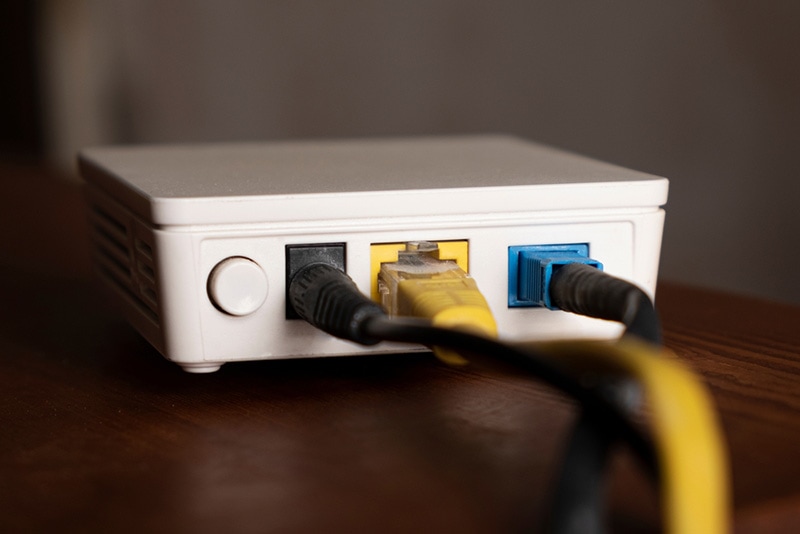
While you will likely have an Internet connection in the living room, bedrooms, and other main rooms of the house, the basement is different. You might not be able to connect to WiFi through the floor. A WiFi extender can improve connectivity in dead areas around the house. Alternatively, you can use Powerline adapters. One adapter connects via an ethernet cable to your router, and you can then plug another adapter in the basement and run an ethernet cable from the plug. A third option is to have an additional Internet line installed.
2. Add More Outlets
As well as an Internet connection, you will need electricity. Even if you have a couple of outlets, you may want to consider having more installed. There is a vast range of devices that need electricity in the modern office, and two outlets won’t be enough. You can save the cost of having new outlets installed by using power strips, but power strips shouldn’t be used permanently. Use power strips with surge protection to ensure safety.
3. Spiral Staircase

Spiral staircases take up very little floor space but are more practical and convenient than ladders or steep straight staircases. This means they not only take up less room in the basement itself but also on the first floor, which means you can enjoy more of your living and basement spaces.
4. Make the Most of Natural Light
It can be difficult to get natural light down into a basement. Where windows do exist, they tend to be narrow windows at the top of the basement wall. They only get sun for a brief period during the day, and they can be easily obstructed by trees and even other buildings outside. Having brand new windows might be cost-prohibitive, but there are other solutions you can use that reflect what natural light there is down and through existing windows.
And because natural light is good for concentration and positive mental health, try to position your work area where the natural light comes in.
5. Install Glass Doors
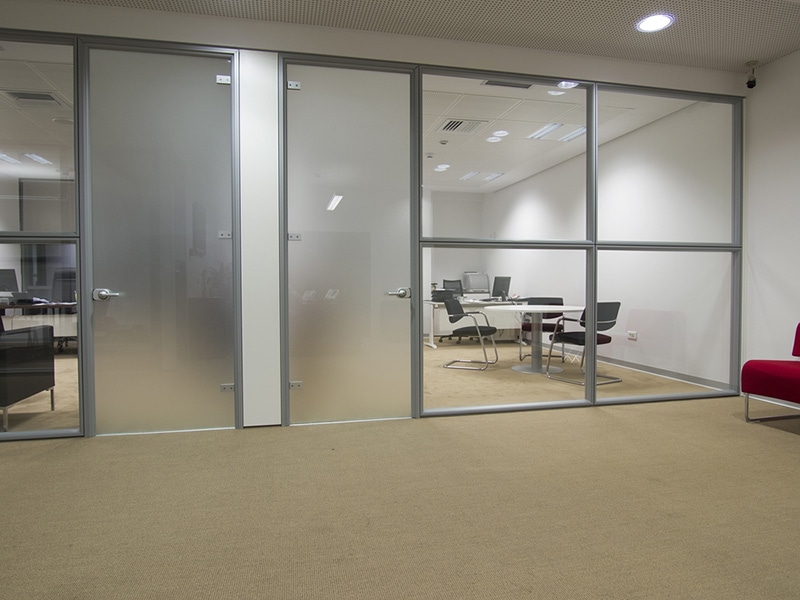
Another key to ensuring a good flow of positive natural light is to use glass doors and even put windows in the internal walls. This enables light to pass from one area of the basement to another unimpeded. The windows don’t have to be plain, you can use frosted or textured glass, as long as light passes through.
6. Insulated Walls
Basement walls can get very cold and damp because the earth outside sits up against them. This cold and damp atmosphere transfers into the basement itself, which can make it a very expensive room to heat. Good insulation helps keep warm air in during the winter and also keeps the temperature down in the summer. Also ensure that the ceiling of the basement, or the floor of the first floor, is well insulated.
7. Install a Kitchen or Refreshment Area
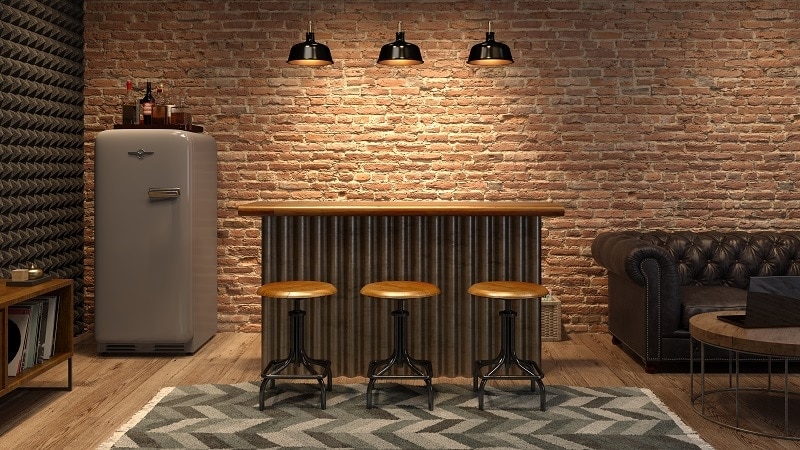
Heading upstairs and back down every time you want a coffee, drink, or snack, can quickly become tiresome. Stepping into the main area of the house is also a really quick way to lose concentration and start procrastinating. While it might be prohibitive to have the basement plumbed so you can add taps and a sink, you can add a coffee bar.
8. Under-Stair Shelves
Whether you need storage for work files and books, or you need storage so that you can get the basement in order and make way for your new office equipment, you will need to find ways to make the most of the space you have. The area under the stairs rarely gets used to its full potential, but it represents a decent amount of space. Install shelves and you can store books, files, and other items.
9. Under-Stair Cupboards
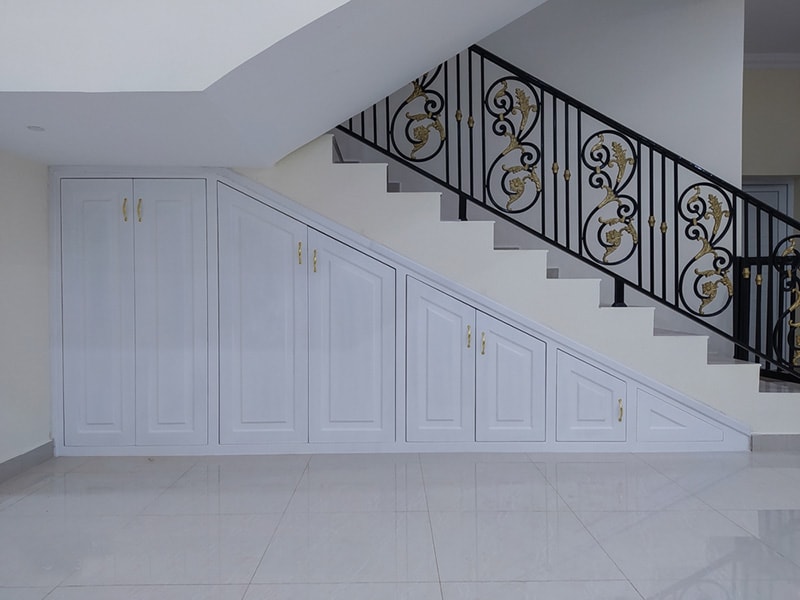
Alternatively, doors can be added, as well as shelves, and you can create an even more customizable storage area. It may even be possible to turn the area into an under-stairs desk area where you can get your work done.
10. Wall Cabinets
Alternatively, use an entire wall of your basement, add storage units, and store all of the basement clutter out of the way. This is best done on walls with no windows, so you don’t block natural light, but using an entire wall provides a lot of storage space and still leaves the bulk of the room for furniture and other purposes.
11. Sliding Door Paneling

You can use sliding doors as a means of partitioning a basement, which is useful if your basement is a multipurpose room. It means that you can slide the door open to create a larger space or close it when you need privacy.
12. Built-In Desk
If you have limited space, making the most of every foot is an important aspect of your basement design. In this case, you may be better dispensing with the free-standing desk and, instead, opt for a built-in unit that combines storage, desk, and even space for printers and other items. Ensure you have room for a comfortable office chair and clear out any clutter to really benefit from the space.
13. Lighting
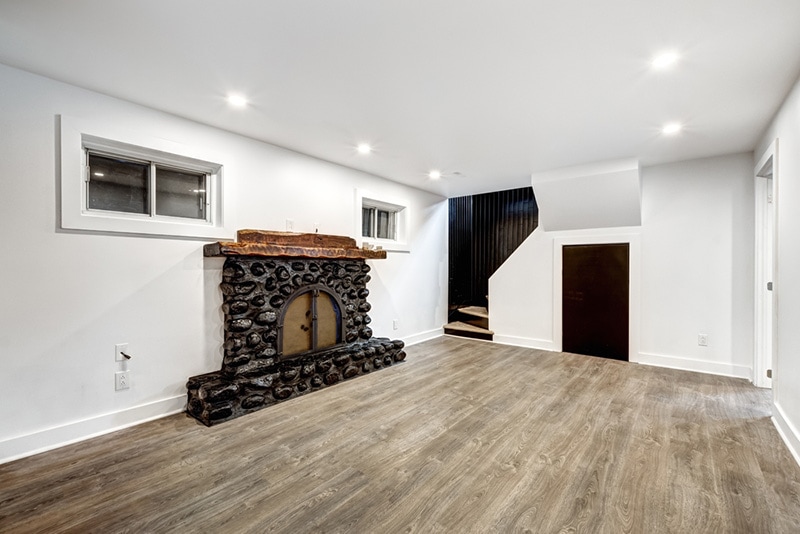
Living spaces and offices have different lighting requirements. While a living space needs ambient, warm light, an office needs bright light, and it needs to be designed so that it doesn’t cast any shadows across the room. If your basement is a multipurpose room, use different styles of lighting in different areas and try to make use of innovative and unique lighting options. Spotlights above your desk and seat can provide the light you need without covering the whole room.
14. Minimalism
You don’t necessarily have to sit on the floor and use a tray to hold your laptop, but office minimalism might be a necessity if space is restricted. Do you need a large laser printer? Do you need a printer at all? Can you make do with a couple of drawers, rather than the two filing cabinets that are taking up valuable corner space?
15. Light Flooring
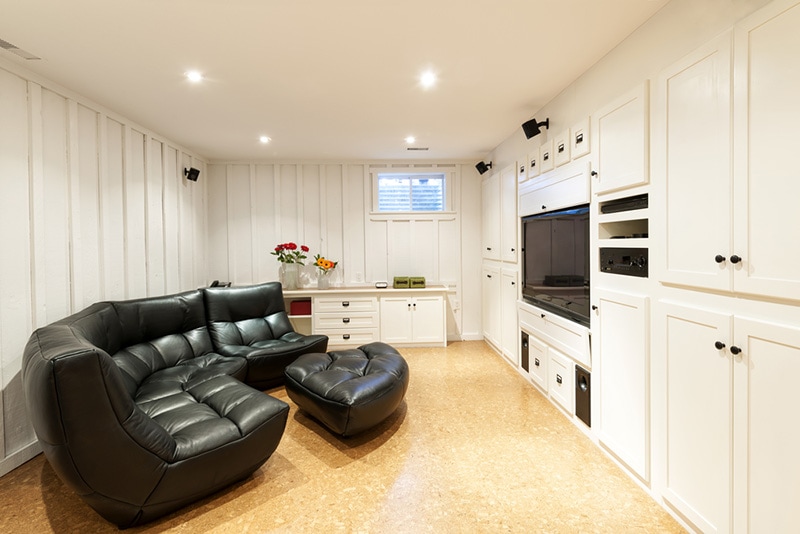
Light flooring is another good way to ensure the basement is well-lit and you aren’t trying to work in a dimly lit space. The flooring doesn’t necessarily have to be reflective but dark tones can make the space seem smaller and less inviting while also sucking any natural light out of the room.
16. A Comfortable Chair
The right office chair ensures you’re sitting in a comfortable position that you can work from while minimizing the risk of repetitive stress, back pains, and other aches. The chair should be adjustable, contoured to your back, and ideally needs five prongs to the base so that it spreads your load. Once you have an adjustable chair, make sure it is set up right, along with the rest of your office furniture and equipment, so you can work with a straight back and look directly ahead at your monitor.
17. Use Indoor Plants

Plants brighten an office, and they even help filter air and improve mental health. They can turn an otherwise stark-looking office space into a homely and inviting atmosphere. Make sure you choose plants that will thrive in the basement environment and under the type of lighting you have.
Conclusion
The basement office can be a secluded, quiet space that makes a great home workspace. Whether your basement will be multipurpose or a dedicated office, you can set it up so that you have everything you need in one room. The key is to design the office space according to the room you have available, and the layout of your basement, so you can make the most of every foot of space you have available.
Featured Image Credit: Artazum, Shutterstock
Contents

